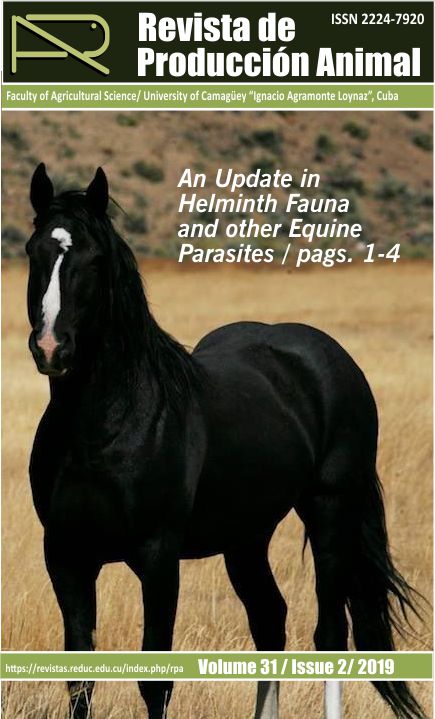Comparison between Ecuadoran Genotypes of Cavy Litters (Cavia porcellus) and Cavies Bred in Peru
Resumen
Background: The threat of extinction posed on different unprotected genotypes from the Andean Ranges of Ecuador is calling for new studies and preservation measures to keep the biological diversity of the area, which has enormous perspectives for human nutrition. The aim of this paper was to compare the sizes and weights up to the weaning stage of native Ecuadoran cavy litters in Azuay province, with the Peruvian-bred line.
Methods: The study took place on Irquis experimental farm, belonging to the Faculty of Agricultural Sciences, University of Cuenca, Ecuador. The database was based on the records of breeding animals screened among farmers from Azuay and Cañar, and it included their phenotypic traits.
Results: No significant differences were observed in the month of parturition, or the number of parturitions, or the genotype regarding the size of the litter at weaning. The data from Azuay and Peru were similar in terms of litter size at birth (3.1 and 3.2, respectively). However, it was higher regarding litter weight at birth and weaning (432 and 837 g, compared to the 313 and 570 g from Azuay, but no different from Cañar).
Conclusions: The native genotypes from Azuay and Cañar were inferior to the Peruvian genotype, in terms of birth weight and weaning weight. Azuay was no different from Peru, according to litter size at birth or weaning. The potential observed in this genotype should be further developed.
Descargas
Citas
Avilés, D. E. (2016). Caracterización genética del cuy doméstico de América del Sur mediante marcadores molecu-lares. Córdoba, España: Departamento de Genética, Universidad de Córdoba.
Barrera, A. C. (2010). Evaluación de las características productivas y reproductivas de cuyes negros manejados en jaulas versus pozas. Tesis de maestría, Facultad de Ciencias Pecuarias, Escuela Superior Politécnica de Chimbo-razo, Riobamba, Ecuador.
Chauca, L. Z. (1997). Producción de cuyes (Cavia porcellus). Perú: Estudio FAO Producción y Sanidad animal.
Osorio, H. (2016). Evaluación de índices productivos de progenitoras de 1ra y 2da generación de la futura línea de cuyes (Cavia porcellus) MVZ, UPLA, en la unidad de producción de Ataura, Jauja. Tesis de maestría, Escue-la Profesional de Medicina Veterinaria y Zootecnia, Universidad Peruana los Andes, Huancayo, Perú.
Rodríguez, H. L.; Palomino, M. T.; Hidalgo, V. L.; Gutiérrez, G. R. (2013). Efectos de factores fijos y al azar sobre el peso al nacimiento y al destete en cuyes de la costa central del Perú. Rev. Inv. Vet. Perú, 24(1), 16-24.
Rodríguez, H. L.; Gutiérrez, G. R.; Palomino, M. T.; Hidalgo, V. L. (2015). Características Maternales al Nacimiento y Destete en Cuyes de la Costa Central del Perú. Rev Inv Vet Perú, 26(1), 77-85.
Xicohtencatl-Sánchez, P. G.; Barrera-Zúñiga, S.; Orozco-Orozco, T.; Torres-Sandoval, S. F. M.; Monsivais-Isiordia, R. (2013). Parámetros productivos de cuyes (Cavia porcellus) del nacimiento al sacrificio en Nayarit, México. Abanico veterinario, 3(1), 36-43.
Los autores de los artículos publicados en RPA retienen los derechos de autor de su trabajo, de marca y patente, y también sobre cualquier proceso o procedimiento descrito en el artículo, así como a compartir, copiar, distribuir, ejecutar y comunicar públicamente el artículo publicado en la RPA o cualquier parte de aquel siempre que indiquen la fuente de publicación (autores del trabajo, revista, volumen, número y fecha), pero están de acuerdo en que la revista publique los trabajos bajo una licencia Creative Commons.
![]() Licencia Attribution-NonCommercial 4.0 International (CC BY-NC 4.0)
Licencia Attribution-NonCommercial 4.0 International (CC BY-NC 4.0)






































